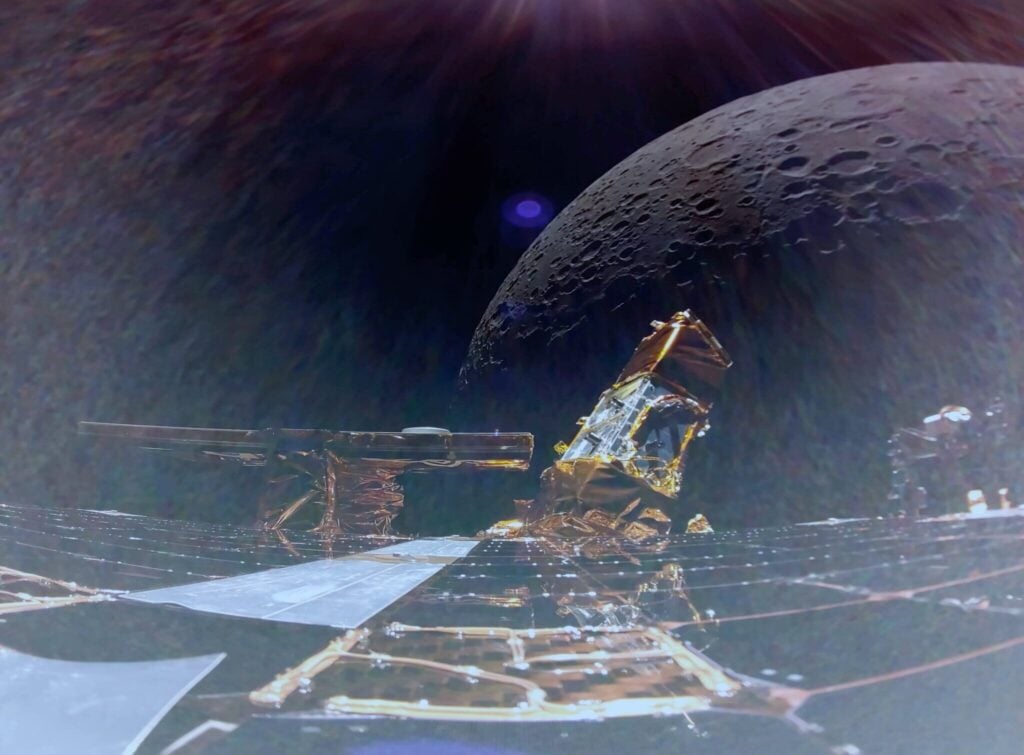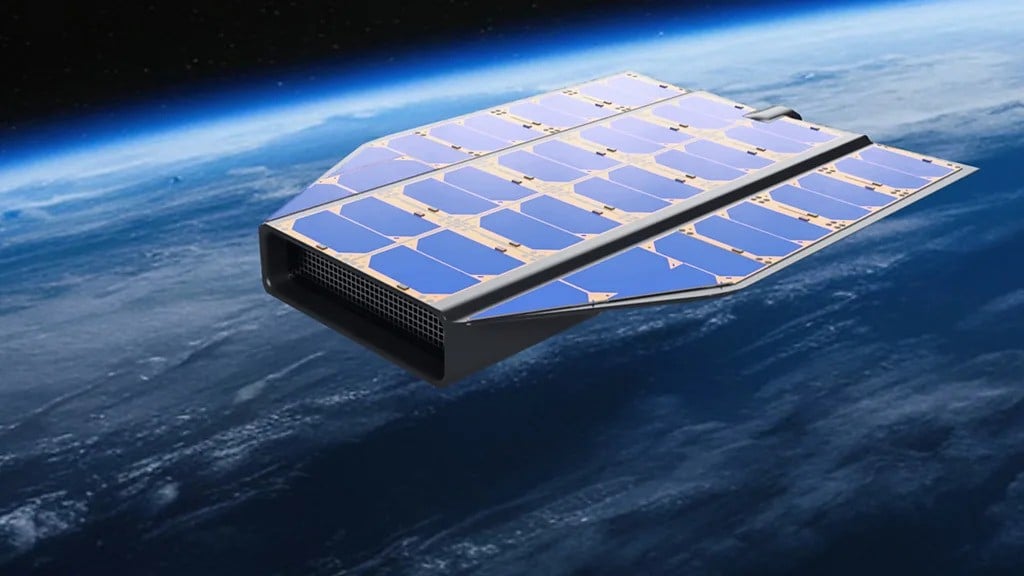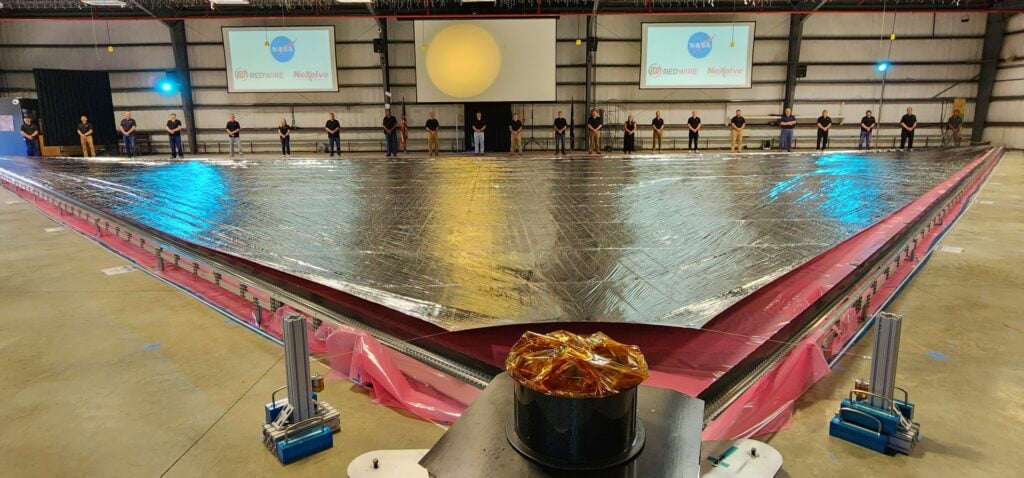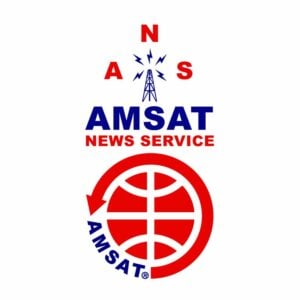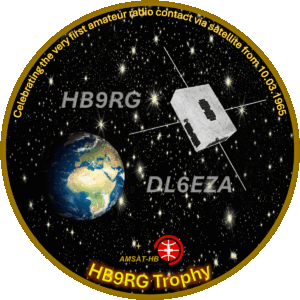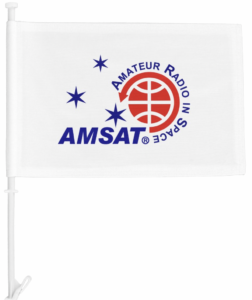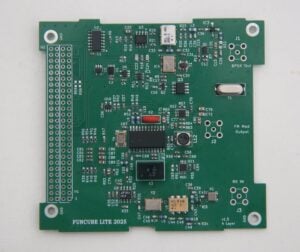ANS-075, March 16, 2025
In this edition:
* Amateur Satellites Finally Launch After Delays
* NASA’s SPHEREx, PUNCH Missions Launch
* ISS Changes Crew for Expedition 73
* Changes to AMSAT-NA TLE Distribution
* ARISS News
* Upcoming Satellite Operations
* AMSAT Ambassador Activities
* Satellite Shorts From All Over
The AMSAT News Service bulletins are a free, weekly news and information service of AMSAT, the Radio Amateur Satellite Corporation. ANS publishes news related to Amateur Radio in Space including reports on the activities of a worldwide group of Amateur Radio operators who share an active interest in designing, building, launching and communicating through analog and digital Amateur Radio satellites.
The news feed on http://www.amsat.org publishes news of Amateur Radio in Space as soon as our volunteers can post it.
Please send any amateur satellite news or reports to: ans-editor [at] amsat.org
Sign up for free e-mail delivery of the AMSAT News Service Bulletins via the ANS List; to join this list see: https://mailman.amsat.org/postorius/lists/ans.amsat.org/
Amateur Satellites Finally Launch After Delays
After delaying the launch of the mission a (highly unusual) seven times — it was originally slated to take to the skies on Feb. 27 — a SpaceX Falcon 9 rocket finally carried the 13th Rideshare to orbit on Saturday, March 15. The launch carried 74 small satellites to sun-sychronous orbit (SSO), lifting off from Vandenberg Space Force Base, California at 06:43 UTC (11:43 p.m. on March 14 local California time).
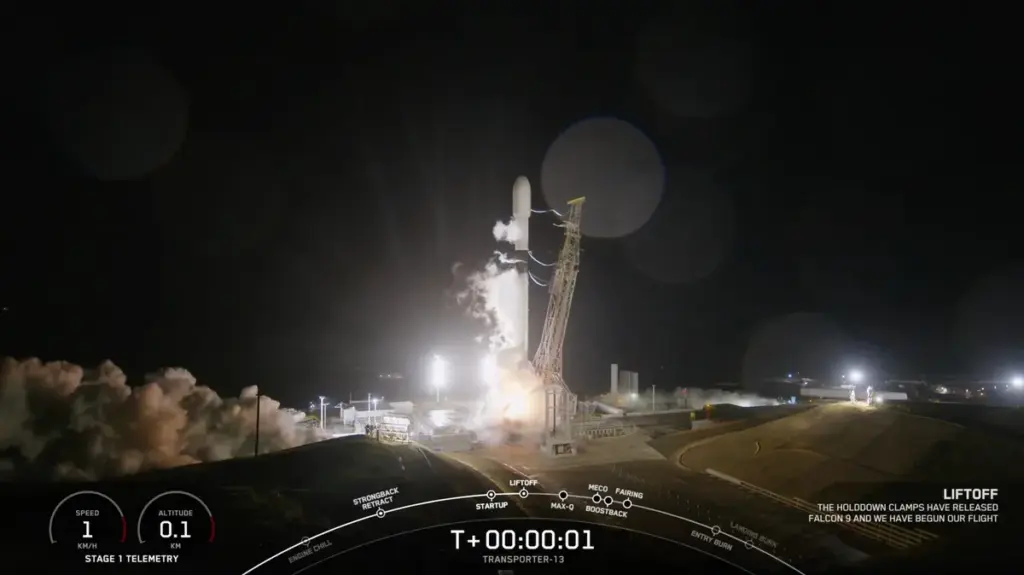
A SpaceX Falcon 9 rocket launches the Transporter 13 rideshare mission from Vandenberg Space Force Base in California on March 15, 2025. (Image credit: SpaceX)
Among the satellites aboard is HADES-ICM 1.5 PocketQube satellite main mission is to act as a FM voice repeater. It can also repeat FSK derived modes like FT-4 and FT-8. It has the same functionalities as in HADES-R (SO-124). FM and Digital modes repeater with Uplink on 145.875 MHz and Downlink on 436.666 MHz. It also carries the same experiment for SMART-IR/Manchester University. The repeater will not be active until all the checks have been performed on the satellite. This can take several weeks.
A group of satellites labeled as “TEVEL2” are on the launch manifest for the SpaceX Transporter 13 mission. Designated as TEVEL2-1 through TEVE2-9, they are all listed as having a downlink frequency of 436.400 MHz, and are expected to be activated in rotation, much in the same way as the previous constellation of TEVEL satellites, which have now all decayed from orbit.
A French cubesat named UVSQ-Sat NG — or “Next Generation” is also on the launch manifest. This satellite appears to have capabilities for amateur operation, however no such operation has been coordinated or announced.
See AMSAT News Service bulletins 061 for more details on all of these satellites.
[ANS thanks Space.com and AMSAT-EA for the above information]
The 2025 AMSAT President’s Club Coins Have Just Arrived!
Celebrating the 40th Anniversary of Amateur Radio on Human Spaceflight
Help Support GOLF and Fox Plus.
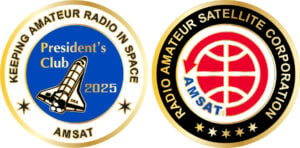
Join the AMSAT President’s Club today and help
Keep Amateur Radio in Space!
https://www.amsat.org/join-the-amsat-presidents-club/
NASA’s SPHEREx, PUNCH Missions Launch
NASA’s SPHEREx and PUNCH missions were launched together on a SpaceX Falcon 9 rocket that lifted off from Vandenberg Space Force Base, California, on Tuesday evening, March 11 (early March 12 UTC). The launch had been delayed one day due to unfavorable weather at the launch site and an issue with one of the spacecraft.
SPHEREx (Spectro-Photometer for the History of the Universe, Epoch of Reionization and Ices Explorer) will then collect data on more than 450 million galaxies along with more than 100 million stars in the Milky Way in order to explore the origins of the universe, contributing to NASA Science’s key goals to discover the secrets of the universe and search for life elsewhere.
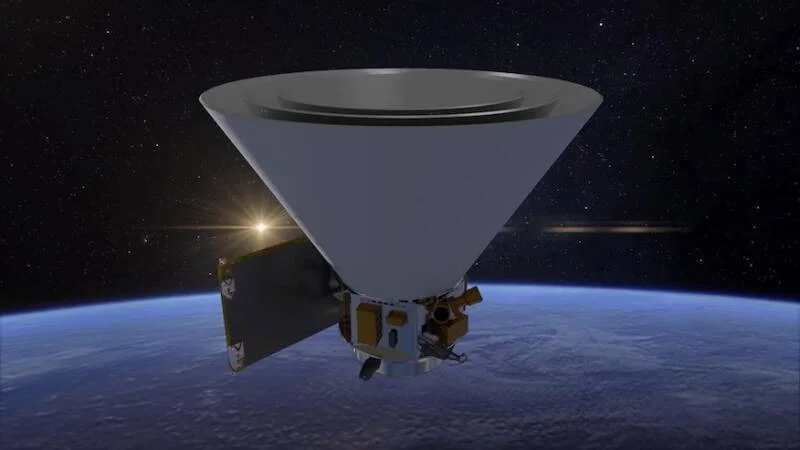
NASA’s SPHEREx mission will operate in low Earth orbit, detecting hundreds of millions of stars and galaxies and creating the first all-sky spectroscopic survey in the near-infrared. This artist’s concept shows the spacecraft and its distinctive conical photon shields, which protect SPHEREx’s telescope from infrared light and heat from the Sun and Earth. (Graphic: NASA/JPL-Caltech)
The mission’s 3D all-sky map will help scientists answer big-picture questions about the universe. The mission will investigate a cosmic phenomenon called inflation that caused the universe to expand rapidly for a fraction of a second after the big bang, measure the collective glow created by galaxies near and far, including hidden galaxies that have not been individually observed, and search the Milky Way galaxy for hidden reservoirs of water, carbon dioxide, and other essential ingredients for life.
The SPHEREx mission’s ability to scan large sections of the sky quickly and gather data on millions of objects complements the work of more targeted telescopes, like NASA’s Hubble and James Webb, and the observatory’s data will be freely available to scientists around the world, providing a new encyclopedia of information about hundreds of millions of cosmic objects.
Along for the ride was a second mission, PUNCH (Polarimeter to Unify the Corona and Heliosphere), a mission consisting of four satellites operating in concert. These small sats will observe the Sun’s corona as it transitions into the solar wind, supporting NASA Science’s key goals by creating a broad awareness and understanding of how the Sun creates conditions that influence Earth and space, which is increasingly part of the human domain.
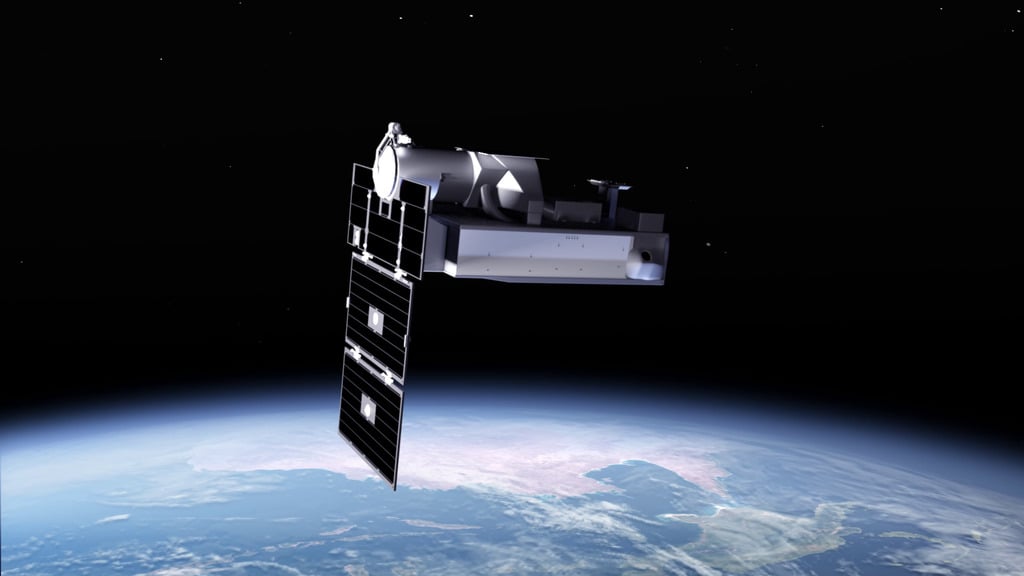
Illustration of one of the four identical PUNCH satellites in operation. (Graphic: NASA)
By providing scientists with new information about how these potentially disruptive solar events form and evolve, data from PUNCH could lead to more accurate prediction about the arrival and impact of such events on Earth and for humanity’s robotic explorers in space.
Following orbital adjustments and commissioning, each of these two missions is planned to last for at least two years, contributing valuable data to the study of the universe and the sun’s influence on space weather.
[ANS thanks NASA for the above information]
Need new satellite antennas?
Purchase M2 LEO-Packs from the AMSAT Store.
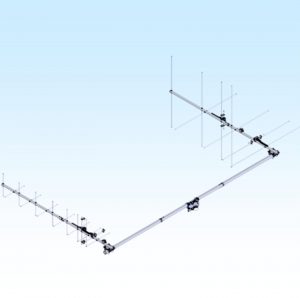
When you purchase through AMSAT, a portion of the proceeds goes towards
Keeping Amateur Radio in Space.
https://amsat.org/product-category/hardware/
ISS Changes Crew for Expedition 73
The 73rd long-duration expedition to the International Space Station (ISS) will begin with the departure of Soyuz MS-26, expected to take place in April 2025. The Expedition 73 crew will consist of astronauts cosmonauts just launched to the station aboard the SpaceX Crew Dragon Endurance, as well as those soon to follow aboard the Soyuz MS-27.
The crew of MS-26, Russian cosmonaunts Alexey Ovchinin and Ivan Vagner and American astronaut Don Pettit, KD5MDT, are already making preparations for departure in the coming weeks.
Scheduled for departure even sooner — probably in the coming week — is SpaceX Crew Dragon Freedom with two members of SpaceX Crew 9, astronaut Nick Hague, KG5TMV, and cosmonaut Aleksandr Gorbunov, accompanied by U.S. astronauts Barry “Butch” Wilmore, and Sunita Williams, KD5PLB. Wilmore and Williams were launched to the ISS in June of last year aboard the Boeing Starliner Crew Flight Test.

The astronauts of NASA’s SpaceX Crew 10 (from left) Kirill Peskov, Nichole Ayers, Takuya Onishi and Anne McClain, leave crew quarters at Kennedy Space Center, FL Wednesday, March 12, 2025 headed for the launch pad. They finally launched to the International Space Station on March 14.
(Photo: Craig Bailey/FLORIDA TODAY via USA TODAY NETWORK)
SpaceX Crew 10 consists of NASA astronaut Anne McClain, who will serve as Crew-10’s commander. She is joined by Crew-10’s pilot, NASA astronaut Nichole Ayers, KJ5GWI, mission specialist Japanese Aerospace Exploration Agency (JAXA) astronaut Takuya Onishi, KF5LKS, and Roscosmos cosmonaut Kirill Peskov. Crew 10 was launched from pad 39A at the Kennedy Space Center in Florida on Friday, March 14, at 23:03 UTC after a scrub on Wednesday. The March 12 launch attempt was scrubbed due to an issue with the hydraulics on ground support systems on the launch pad.
That crew will be joined later next month by the crew of Soyuz MS-27, which is scheduled to consist of cosmonaunts Sergey Ryzhikov and Alexey Zubritsky, as well as American astronaut Jonny Kim.
Once the MS-26 crew departs, Takuya Onishi of the Japan will serve as the commander of Expedition 73, the third JAXA astronaut to take command of the station. Born in Nerima, Japan, Onishi earned an aeronautical and space engineering degree from the University of Tokyo and was a co-pilot of Boeing 767 airplanes from 2003 to 2009. Onishi will fly to space for the second time on Crew-10, having previously flown to the ISS aboard Soyuz MS-01 in 2016 as part of Expedition 48/49. JAXA and NASA selected Onishi for NASA’s 20th astronaut group in 2009.
Expedition 73 will continue the extensive scientific research conducted aboard the ISS, focusing on various fields, including biology, human physiology, physics, and materials science. The crew members will also maintain and upgrade the space station systems.
[ANS thanks NASA for the above information]
AMSAT Remove Before Flight Key Tags Now Available
Yes, These are the Real Thing!

Your $20 Donation Goes to Help Fly a Fox-Plus Satellite
Includes First Class Postage (Sorry – U.S. Addresses Only)
Order Today at https://www.amsat.org/product/amsat-remove-before-flight-keychain
Changes to AMSAT-NA TLE Distribution for 14 March
Two Line Elements or TLEs, often referred to as Keplerian elements or keps in the amateur community, are the inputs to the SGP4 standard mathematical model of spacecraft orbits used by most amateur tracking programs. Weekly updates are completely adequate for most amateur satellites. TLE bulletin files are updated daily in the first hour of the UTC day. New bulletin files will be posted immediately after reliable elements become available for new amateur satellites. More information may be found at https://www.amsat.org/keplerian-elements-resources/.
NOTICE: In an effort to minimize confusion between sources of two line element sets, AMSAT is adopting the convention of listing the USSF/NORAD Satellite Catalog name first, followed by any secondary name or names in parentheses. For example, “POEM 4 (BGS ARPIT)” was added recently where “POEM 4” is the name that appears in the U.S. Space Force Satellite Catalog, and “BGS ARPIT” is the name best known within the amateur satellite community. Expect name changes for affected satellites in the coming weeks as this change is fully implemented.
The following satellite has been added to this week’s AMSAT TLE distribution:
+ HYDRA-T NORAD Cat ID 62692 Downlink 437.778 MHz
[ANS thanks Joe Fitzgerald, KM1P, AMSAT Orbital Elements Manager for the above information]
ARISS NEWS
 Amateurs and others around the world may listen in on contacts between amateurs operating in schools and allowing students to interact with astronauts and cosmonauts aboard the International Space Station. The downlink frequency on which to listen is 145.800 MHz worldwide.
Amateurs and others around the world may listen in on contacts between amateurs operating in schools and allowing students to interact with astronauts and cosmonauts aboard the International Space Station. The downlink frequency on which to listen is 145.800 MHz worldwide.
None scheduled in the immediate future due to crew changes.
The crossband repeater continues to be active (145.990 MHz up {PL 67} & 437.800 MHz down). If any crewmember is so inclined, all they have to do is pick up the microphone, raise the volume up, and talk on the crossband repeater. So give a listen, you just never know.
The packet system is also active (145.825 MHz up & down).
As always, if there is an EVA, a docking, or an undocking; the ARISS radios are turned off as part of the safety protocol. Systems will be OFF for Crew Dragon docking on March 16, and for undocking later in the week.
Note, all times are approximate. It is recommended that you do your own orbital prediction or start listening about 10 minutes before the listed time.
The latest information on the operation mode can be found at https://www.ariss.org/current-status-of-iss-stations.html
The latest list of frequencies in use can be found at https://www.ariss.org/contact-the-iss.html
[ANS thanks Charlie Sufana, AJ9N, one of the ARISS operation team mentors for the above information]
Upcoming Satellite Operations
+ N4AKV/R will be on various satellites from FM25, FM26, FM27, and FM28 on March 16-18. See hams.at for details.
+ PA3GAN will be on AO-07 from JO22 on March 16.
+ WD5GRW will be on FM satellites for a POTA operation in EM01 on March 16.
A growing number of satellite rovers are currently engaged in sharing their grid square activations on https://hams.at. By visiting the website, you gain easy access to comprehensive information about the operators responsible for activating specific grid squares. Additionally, you have the ability to assess the match score between yourself and a particular rover for a given pass, while also being able to identify the upcoming satellite passes that are accessible from your location.
[ANS thanks hams.at for the above information]
AMSAT Ambassador Activities
AMSAT Ambassadors provide presentations, demonstrate communicating through amateur satellites, and host information tables at club meetings, hamfests, conventions, maker faires, and other events.
March 22, 2025
Midwinter Madness Hamfest
Buffalo Civic Center
1306 County Rd 134
Buffalo MN 55313
https://k0ltc.org/midwinter-madness/
KØJM, ADØHJ, KEØPBR
March 27, 2025
AMSAT Update and Info
West Fork Amateur Radio Club
Paradise Fire Dept.
303 Main St.
Paradise, TX 76073
https://wfarc.org/
W5ITR
April 4 – 5, 2025
Southeastern VHF Conference 2025
Quality Inn
3095 Wilma Rudolph Blvd
Clarksville, TN 37040
https://svhfs.org/wp/2025-conference/
W4FCL
April 5, 2025
RARSfest
Jim Graham Building
NC State Fairgrounds
Youth Center Drive, Gate 5
Raleigh NC
https://www.rarsfest.org/index.php
K4EB, N4AEW, W1DCM, KK4HG, N4HF
[ANS thanks Bo Lowrey, W4FCL, Director – AMSAT Ambassador Program, for the above information]
Satellite Shorts From All Over
+ AMSAT Italia is pleased to announce the renewal of its Board of Directors, which were elected on February 26th and assigned to the role on March 3rd. The new Board of Directors, in charge for the period 2025-2027, consists of:
- De Paolis Francesco IKØWGF – President / Treasurer
- Ferrario Gianpietro IZ2GOJ – Vice President
- Andrioli Fabio IZØQPO – Secretary
- Ariotti Claudio IK1SLD – Board Member
- Tognolatti Piero IØKPT – Board Member
Andrioli Fabio IZØQPO and Tognolatti Piero IØKPT join the BoD after being former members of the board of auditors. Fabrizio Carrai IU5GEZ and Emanuele D’Andria IØELE leave the BoD, while Emanuele IØELE was already appointed by the assembly of associates as President Emeritus of AMSAT Italia. For more information about AMSAT Italia and its activities, please visit their website https://www.amsat.it. (ANS thanks Francesco De Paolis, IKØWGF, for the above information.)
+ Intuitive Machine’s IM-2 Athena lander touched down near the Moon’s south pole, 250 meters from its target in the Mons Mouton region, inside of a crater. But, while a softer landing than last time, like IM-1 in Feb 2024, the lander appears to have fallen over into an “incorrect attitude” ending up “somewhat on its side.” A day later the mission was declared over, with little hope of even partial recovery due to solar panels oriented in the wrong direction and the extreme cold temperatures in the crater. (ANS thanks The Orbital Index for the above information.)
+ With somewhat better luck, another private lunar lander carrying a drill, vacuum and other experiments for NASA touched down on the moon on March 2, the latest in a string of companies looking to kickstart business on Earth’s celestial neighbor ahead of astronaut missions. Firefly Aerospace’s Blue Ghost lander descended from lunar orbit on autopilot, aiming for the slopes of an ancient volcanic dome in an impact basin on the moon’s northeastern edge of the near side. (ANS thanks The Associate Press for the above information.)
+ Starship blew up over the Caribbean, again. Starship Flight 8 seems to have suffered the same fate as its predecessor. Eight minutes into Ship 34’s powered flight, four of its six Raptor engines shut down, and the craft began to tumble. Minutes later, it exploded over the Caribbean, producing a similarly spectacular light show as the last flight. In better news, Super Heavy Booster 15 was again caught by its launch tower, an incredible feat that is somehow slowly starting to look routine. (ANS thanks The Orbital Index for the above information.)
+ NASA recently turned off Voyager 1’s cosmic ray subsystem experiment and Voyager 2’s low-energy charged particle instrument to conserve power. At 43 years old, both craft are at half their initial power levels, now operating at around 235W each and losing about 4W of power generation capacity each year. In part, this is due to the 87.7-year half-life decay of Plutonium-238, which powers the probes’ three Multi-Hundred-Watt Radioisotope Thermoelectric Generators. (ANS thanks The Orbital Index for the above information.)
Join AMSAT today at https://launch.amsat.org/
In addition to regular membership, AMSAT offers membership to:
* Societies (a recognized group, clubs or organization).
* Primary and secondary school students are eligible for membership at one-half the standard yearly rate.
* Post-secondary school students enrolled in at least half time status shall be eligible for the student rate for a maximum of 6 post-secondary years in this status.
* Memberships are available for annual and lifetime terms.
Contact info [at] amsat.org for additional membership information.
73 and remember to help Keep Amateur Radio in Space!
This week’s ANS Editor, Mark Johns, KØJM
mjohns [at] amsat.org
ANS is a service of AMSAT, the Radio Amateur Satellite Corporation, 712 H Street NE, Suite 1653, Washington, DC 20002

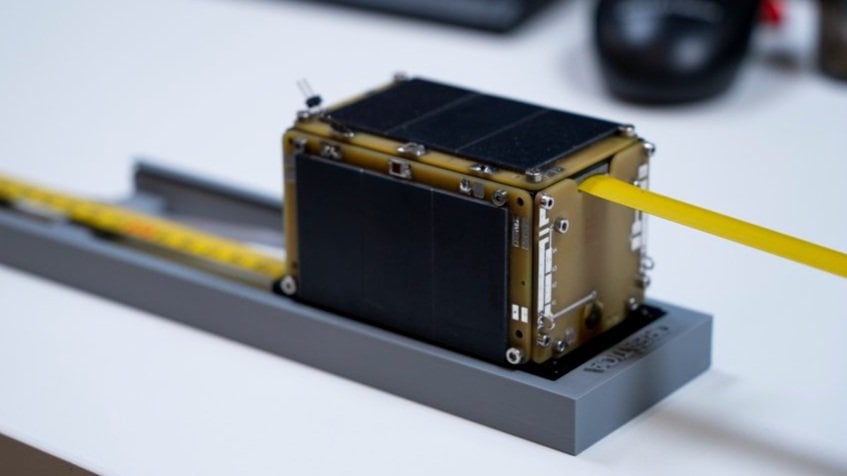
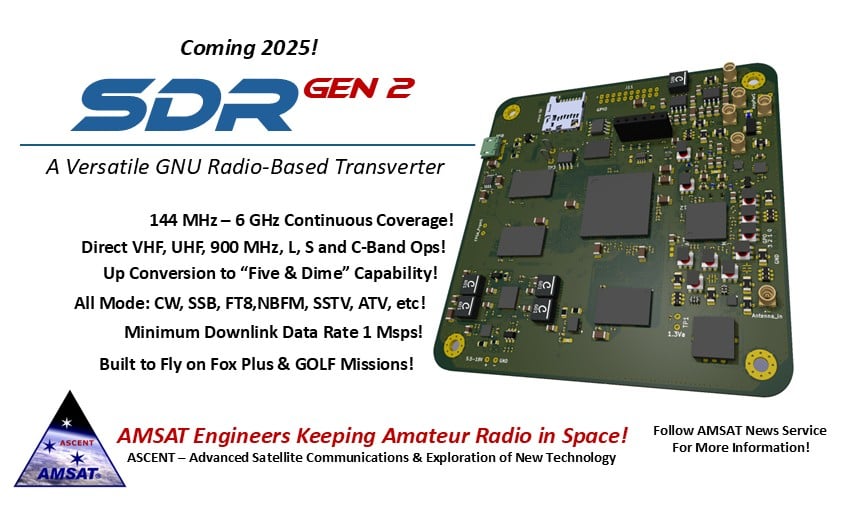
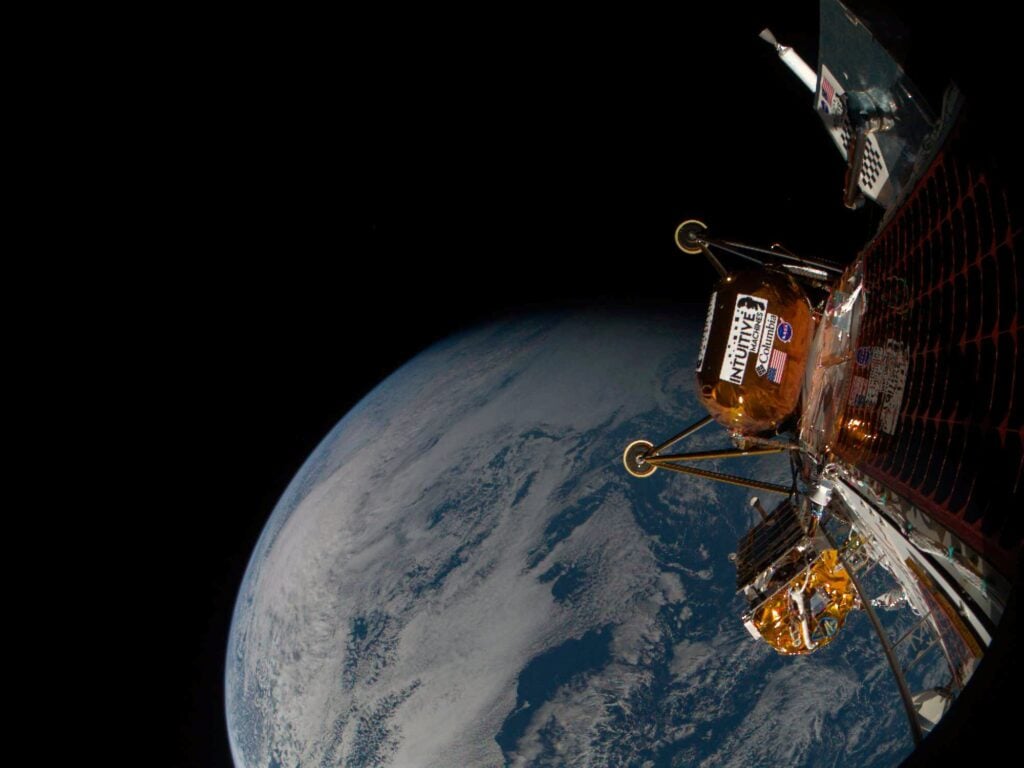
 The crossband repeater continues to be active (145.990 MHz up {PL 67} & 437.800 MHz down). If any crewmember is so inclined, all they have to do is pick up the microphone, raise the volume up, and talk on the crossband repeater. So give a listen, you just never know.
The crossband repeater continues to be active (145.990 MHz up {PL 67} & 437.800 MHz down). If any crewmember is so inclined, all they have to do is pick up the microphone, raise the volume up, and talk on the crossband repeater. So give a listen, you just never know.